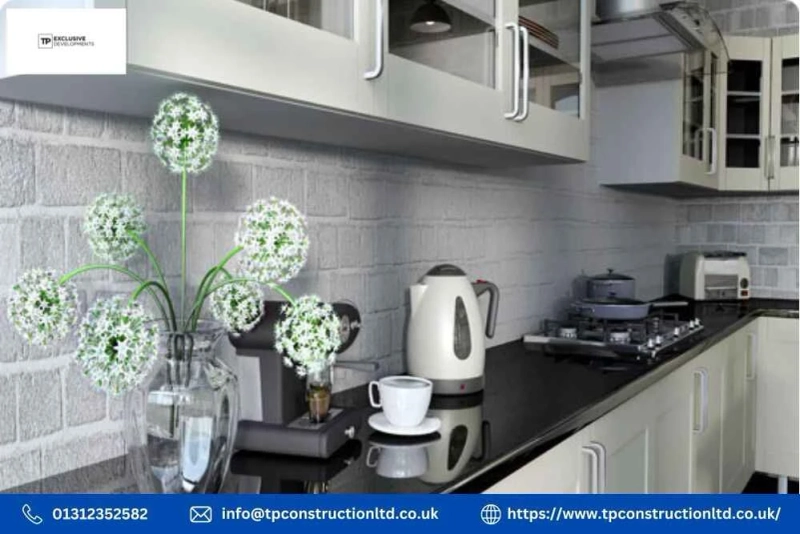The kitchen is often referred to as the heart of the home. It's where meals are prepared, conversations happen, and memories are made. But what does it take to design a kitchen that is not only functional but also a reflection of your personal style? This comprehensive guide will provide you with insights, tips, and practical advice to help you designing and planning your dream kitchen.
Assessing Your Needs
Before diving into design details, it's important to assess your needs. What do you want from your kitchen? Are you a gourmet cook needing ample prep space, or do you need an area for quick meals and social gatherings?
Consider questions like:
How many people use the kitchen regularly?What are your cooking habits?Do you need space for dining in the kitchen?By understanding your needs, you can prioritize features that are most important to you.
Setting a Budget
Setting a budget is a crucial step in the planning process. It helps to determine the scope of your project and keeps you on track financially.
Steps to Set a Budget
Assess Your Finances: Know how much you can afford to spend without stretching your finances.Research Costs: Look into the costs of materials, labor, appliances, and permits.Allocate Funds: Distribute your budget across different categories such as cabinetry, appliances, and labor.Plan for Contingencies: Set aside a portion (usually 10-20%) for unexpected expenses.Remember, it's not just about cutting costs but getting the best value for your money.
Choosing a Layout
The layout of your kitchen is fundamental to its functionality. Common layouts include:
1. L-Shaped Kitchen
Ideal for small to medium spaces, providing ample counter space and an open area for dining.
2. U-Shaped Kitchen
Great for larger spaces, offering maximum storage and counter space but may require more walking.
3. Galley Kitchen
Best for compact spaces, with parallel counters and efficient work triangles.
4. Island Kitchen
Perfect for open-plan homes, providing additional counter and storage space, and a focal point for socializing.
Choosing the right layout depends on your space and how you intend to use the kitchen.
Selecting Materials
The materials you choose for your kitchen can affect both its aesthetics and functionality.
Cabinetry
Wood: Classic and durable.Laminate: Affordable and easy to maintain.Metal: Modern and sleek but can be expensive.Countertops
Granite: Durable and heat-resistant.Quartz: Non-porous and low maintenance.Marble: Luxurious but requires sealing.Flooring
Tile: Durable and easy to clean.Hardwood: Warm and timeless.Vinyl: Affordable and versatile.Selecting the right materials involves balancing durability, maintenance, and style.
Picking Appliances
Choosing the right appliances can make your kitchen more efficient and enjoyable to use.
1. Refrigerator
Consider size, energy efficiency, and features like ice makers and water dispensers.
2. Oven and Stove
Decide between gas, electric, or induction based on your cooking style.
3. Dishwasher
Look for energy efficiency and noise levels.
4. Microwave
Placement (countertop vs. built-in) and size are key considerations.
5. Range Hood
Ensure it’s powerful enough to ventilate your kitchen properly.
Researching and selecting appliances that fit your needs and budget can enhance your kitchen's functionality.
Lighting Your Kitchen
Good lighting is essential in the kitchen for both practical and aesthetic reasons.
Types of Lighting
Ambient Lighting: General lighting for overall illumination, usually from ceiling fixtures.Task Lighting: Focused lighting for specific tasks like cooking and chopping, often under cabinets.Accent Lighting: Adds a decorative touch, highlighting features like a backsplash or artwork.Layering these types of lighting creates a well-lit, functional, and inviting space.
Incorporating Storage Solutions
Effective storage solutions can make a big difference in how your kitchen functions.
Cabinets and Drawers
Deep drawers for pots and pans.Pull-out shelves for easy access.Pantry
Built-in or freestanding, a pantry provides extra storage for non-perishables.Creative Storage
Use vertical space with wall-mounted racks and hooks.Incorporate hidden storage in the form of toe-kick drawers or pull-out cutting boards.Planning your storage solutions thoughtfully ensures everything has its place, keeping your kitchen organized and clutter-free.
Choosing Colors and Finishes
Colors and finishes set the tone for your kitchen’s design.
Color Schemes
Neutral: Timeless and versatile.Bold: Adds personality and flair.Monochrome: Sleek and modern.Finishes
Matte: Understated and contemporary.Glossy: Reflective and can make a space feel larger.Hardware
Brushed Nickel: Modern and durable.Oil-Rubbed Bronze: Adds warmth and character.Polished Chrome: Sleek and easy to clean.Your choices here can transform the look and feel of your kitchen, making it uniquely yours.
Hiring Professionals
While DIY projects can be fulfilling, some tasks are best left to professionals.
When to Hire a Professional
Complex Electrical or Plumbing Work: Ensures safety and compliance with building codes.Custom Cabinetry: Professional craftsmanship guarantees quality and precision.Major Renovations: Structural changes often require professional expertise.Finding the Right Professional
Research: Look for credentials, reviews, and portfolios.Interview: Discuss your project and get quotes.Contracts: Ensure clear terms and timelines are set.Hiring the right professionals can save time, reduce stress, and ensure a high-quality finish.
DIY vs. Professional Help
Deciding between DIY and professional help depends on your skills, time, and the project's complexity.
DIY Projects
Painting: Easy to do and can save money.Installing Fixtures: Simple tasks like installing a faucet can be DIY-friendly.Backsplash: Installing a tile backsplash can be a manageable DIY project.Professional Projects
Structural Changes: Removing walls or altering layouts.Complex Installations: Plumbing, electrical, and custom cabinetry.Knowing your limits and when to call in professionals can lead to a smoother, more successful kitchen renovation.
Sustainable Kitchen Design
Creating a sustainable kitchen is not only good for the environment but can also save you money in the long run.
Energy-Efficient Appliances
Look for ENERGY STAR-rated appliances that use less energy and water.
Sustainable Materials
Reclaimed Wood: Eco-friendly and adds character.Bamboo: Rapidly renewable and durable.Recycled Materials: Countertops made from recycled glass or paper.Water-Saving Fixtures
Install low-flow faucets and water-efficient dishwashers.
Incorporating these elements can make your kitchen greener and more sustainable.
Final Touches
The final touches bring your kitchen together and reflect your personal style.
Decor
Artwork: Adds personality and visual interest.Plants: Bring life and color to your space.Accessories
Rugs: Add warmth and comfort.Window Treatments: Provide privacy and style.Organizational Tools
Drawer Dividers: Keep utensils organized.Shelving: Display your favorite items while keeping them accessible.These elements add the finishing touches that make your kitchen uniquely yours.
Maintaining Your Kitchen
Once your dream kitchen is complete, maintaining it ensures it stays beautiful and functional.
Regular Cleaning
Daily: Wipe down surfaces and wash dishes.Weekly: Clean appliances and mop floors.Monthly: Deep clean cabinets, drawers, and appliances.Preventative Maintenance
Check for Leaks: Regularly inspect plumbing for leaks.Seal Surfaces: Periodically reseal countertops to protect them.Appliance Care
Follow Manufacturer Instructions: Proper use and care extend appliance life.Schedule Servicing: Regular maintenance can prevent costly repairs.Keeping up with these tasks will help maintain the longevity and appearance of your kitchen.
Frequently Asked Questions (FAQs)
Q: How long does it typically take to design and renovate a kitchen?
A: The timeline for designing and renovating a kitchen can vary widely depending on the scope of the project. On average, it can take anywhere from 3 to 6 months, including planning, purchasing materials, and actual construction.
Q: What is the most popular kitchen layout?
A: The most popular kitchen layout is the L-shaped kitchen. It is highly versatile, providing ample counter space and accommodating various kitchen sizes and designs.
Q: How can I make my kitchen more eco-friendly?
A: To make your kitchen more eco-friendly, consider using energy-efficient appliances, sustainable materials like reclaimed wood or bamboo, and water-saving fixtures. Additionally, incorporating recycling and composting stations can help reduce waste.
Q: Should I hire a kitchen designer?
A: Hiring a kitchen designer can be beneficial, especially for larger or more complex projects. A designer can provide expertise in space planning, material selection, and overall design coherence, ensuring your kitchen meets your needs and aesthetic preferences.
Conclusion
In conclusion, designing and planning your dream kitchen is a journey that involves careful consideration of your needs, preferences, and budget. From choosing the right layout to selecting materials and appliances, each step is crucial in creating a space that is both functional and beautiful. Remember to balance practicality with personal style and don't hesitate to seek professional help when needed. With thoughtful planning and execution, your dream kitchen can become a reality, providing a space where you can cook, entertain, and create lasting memories.


